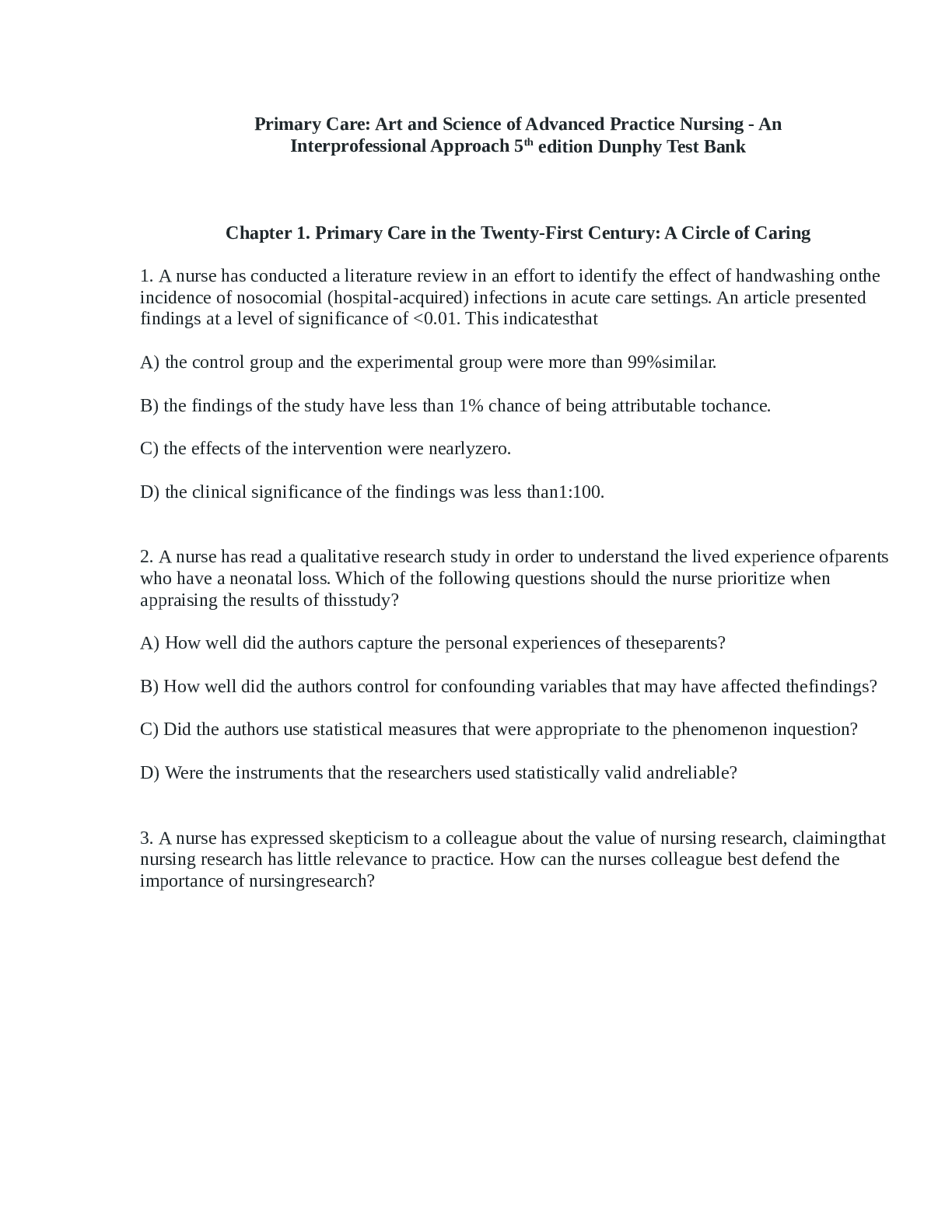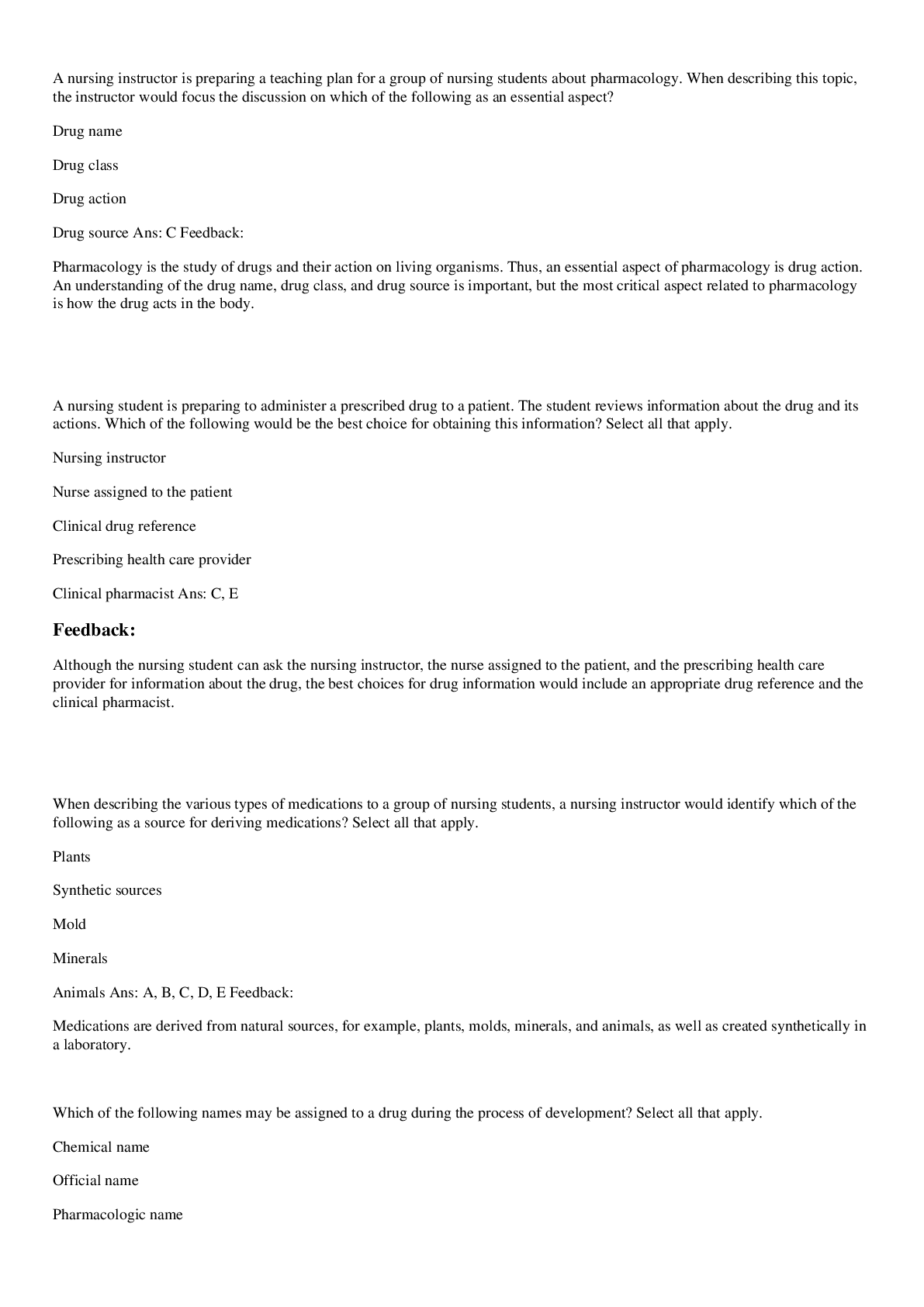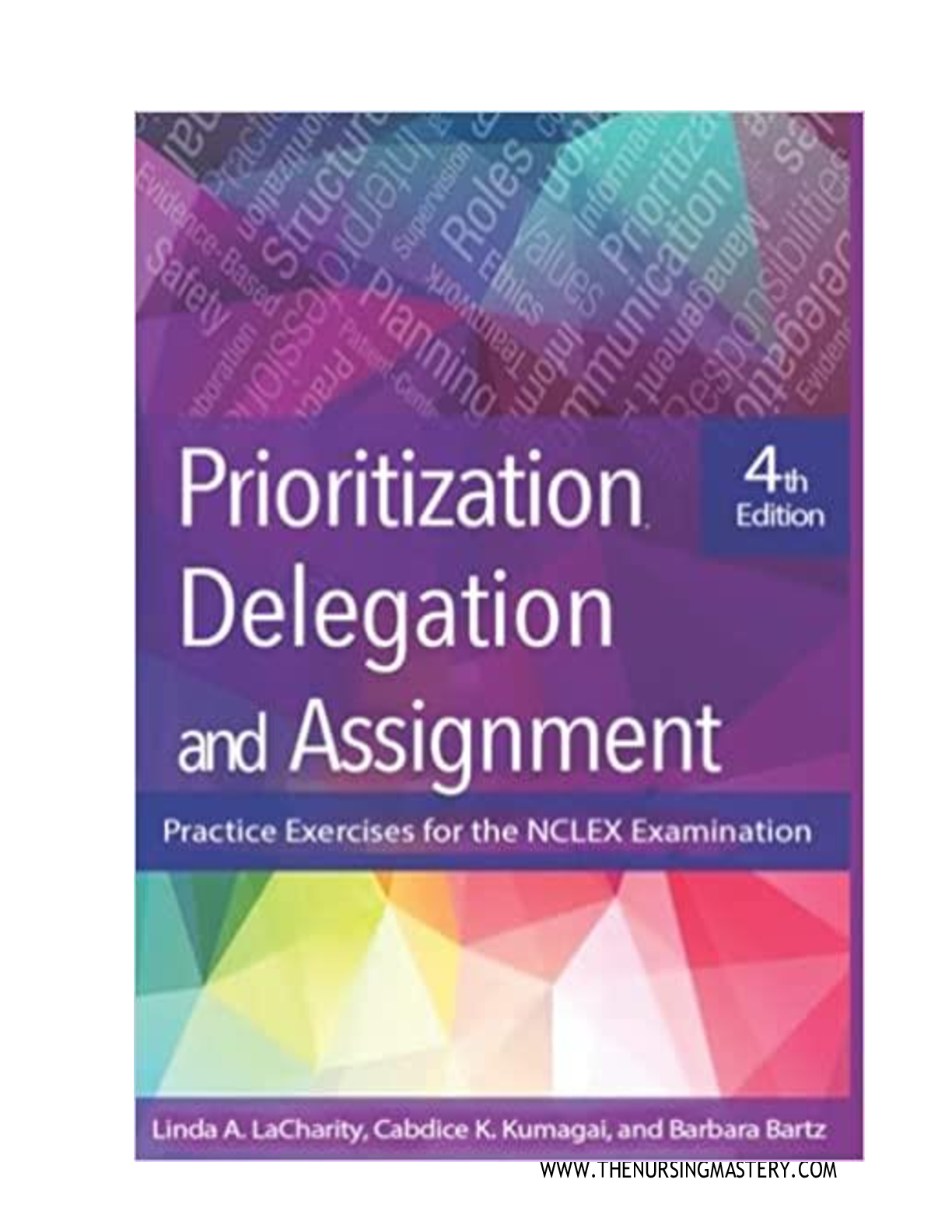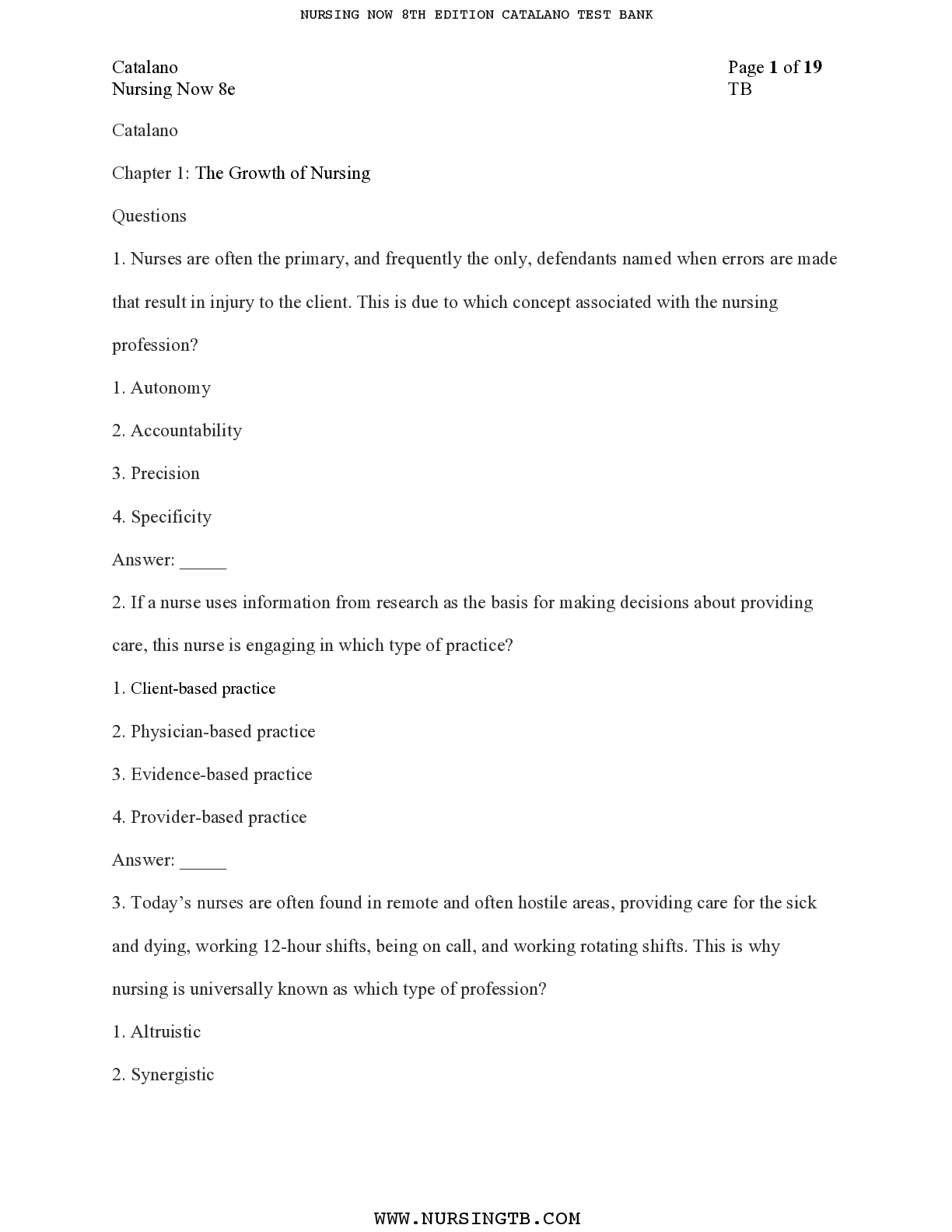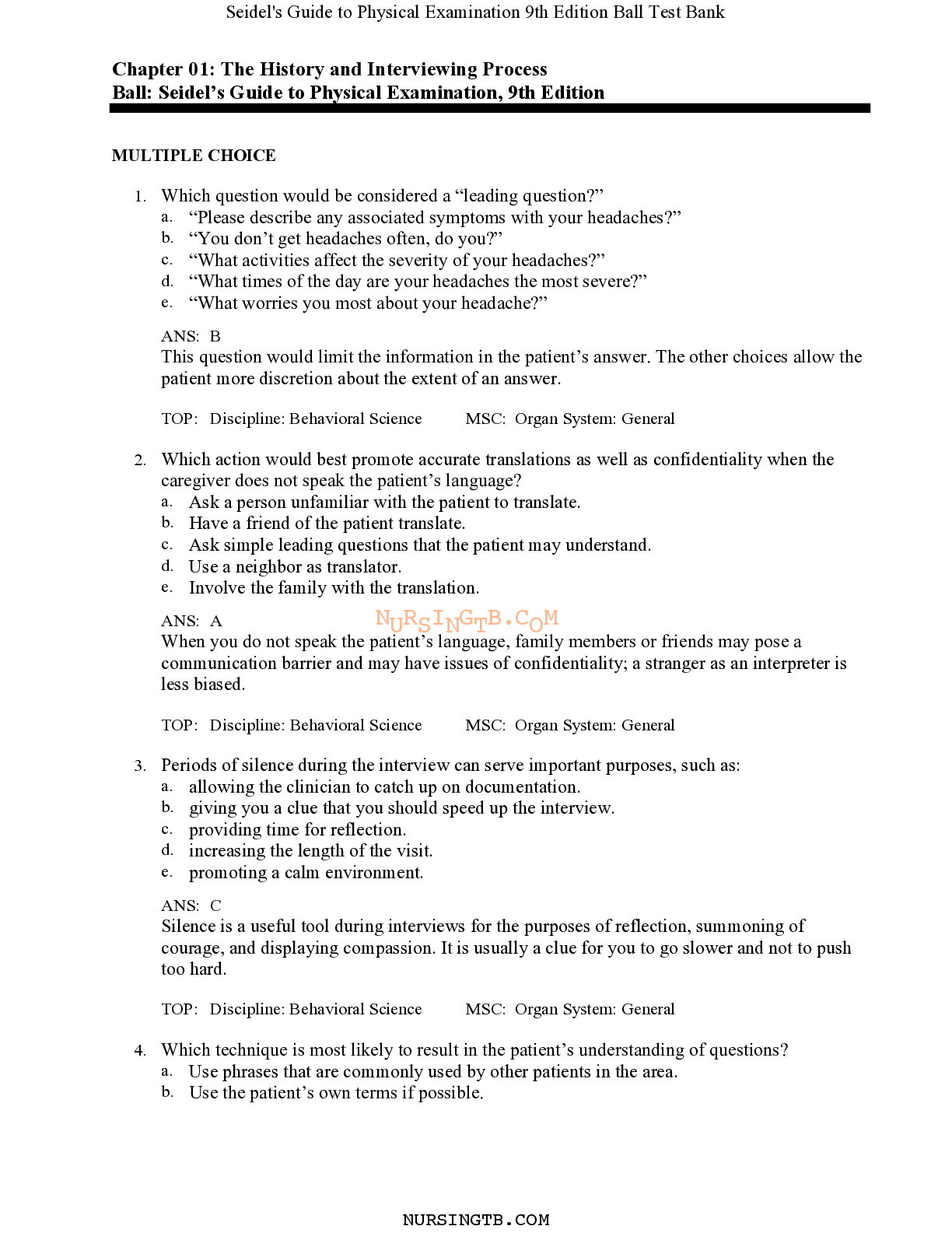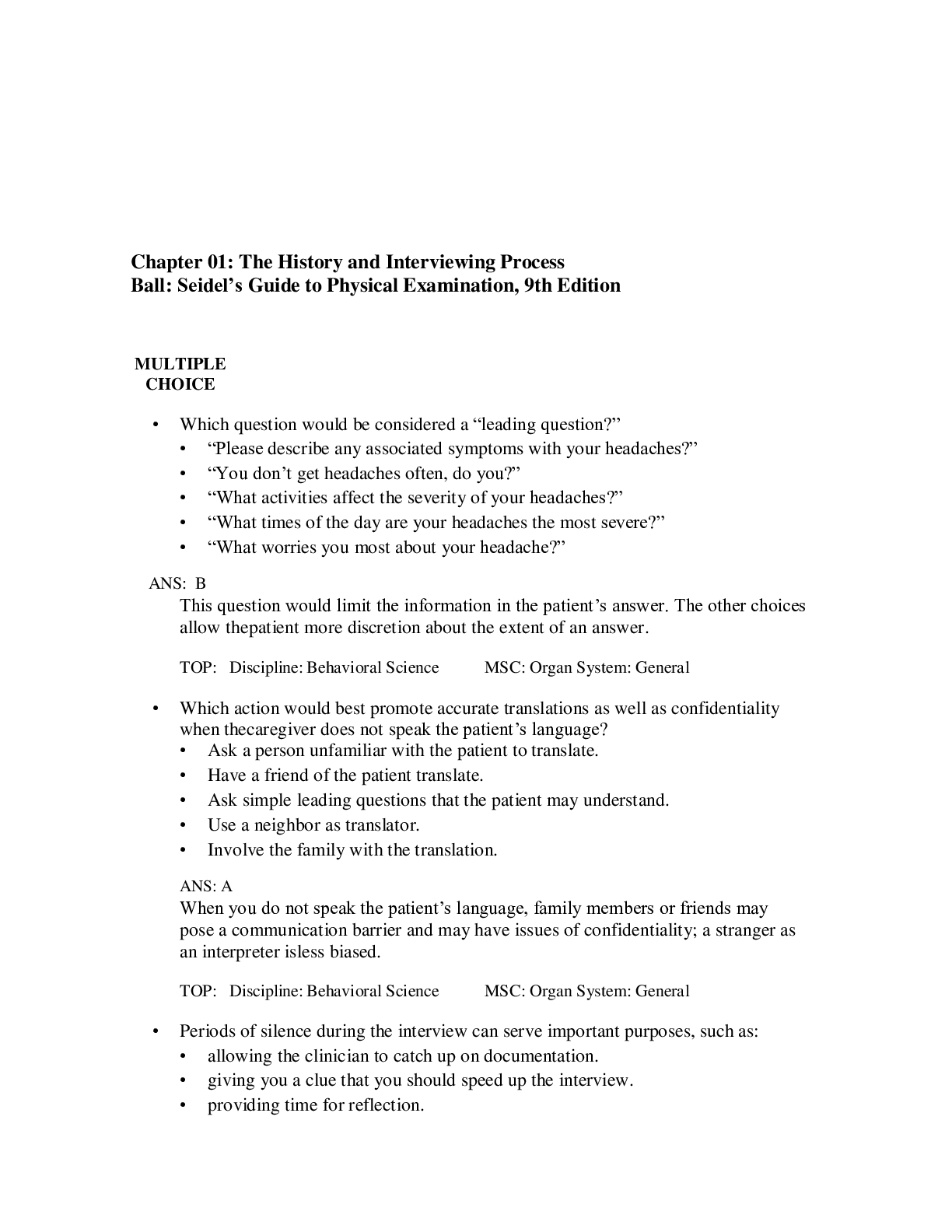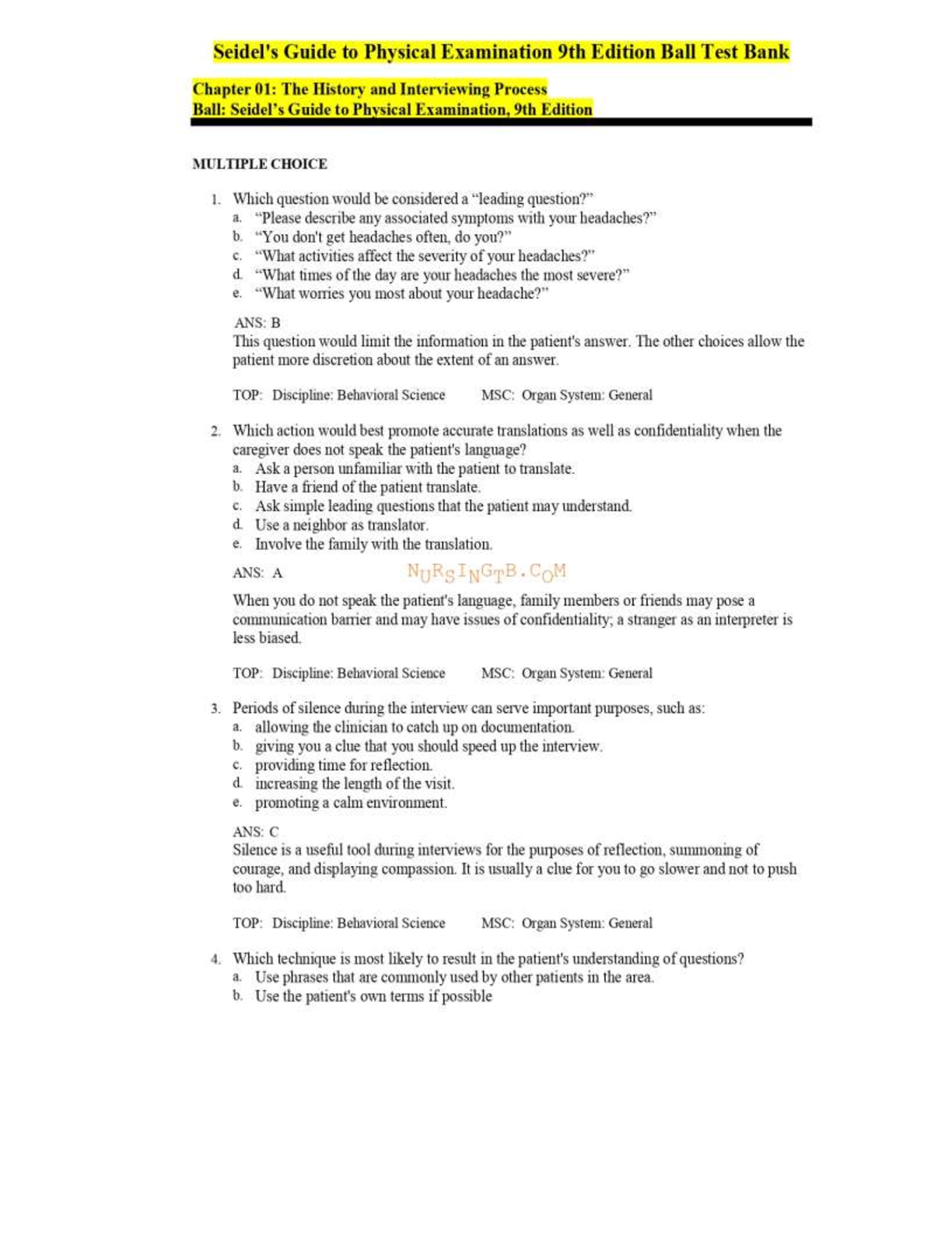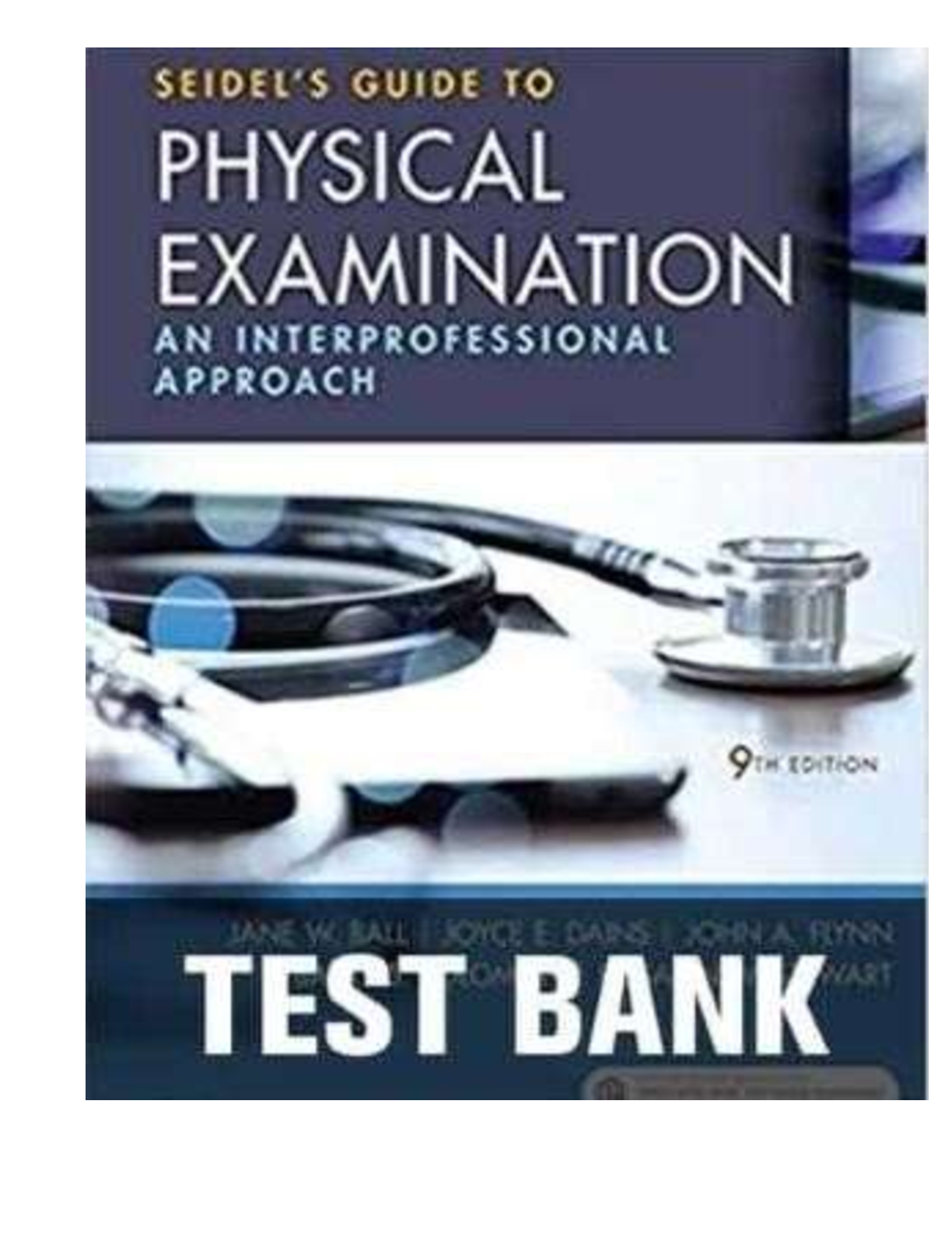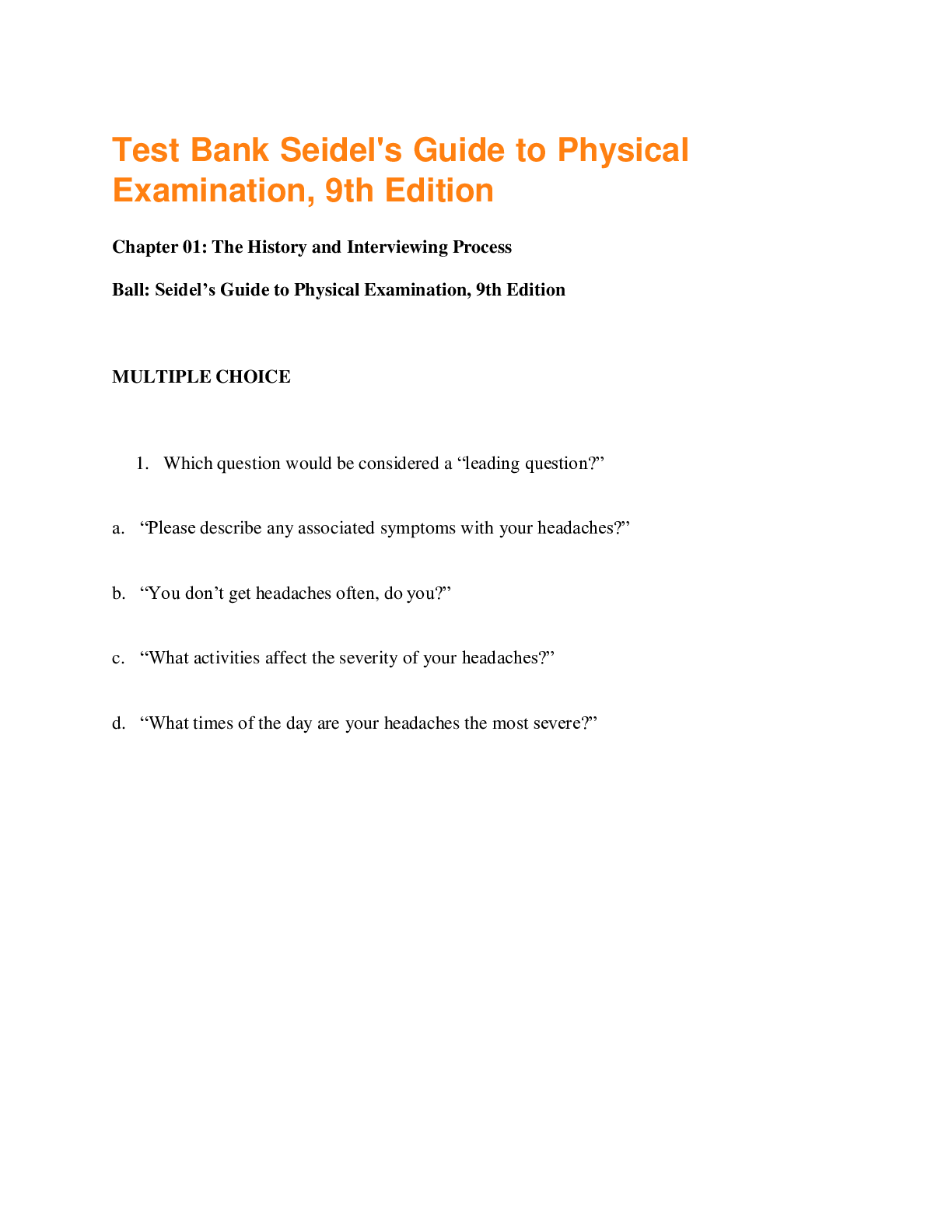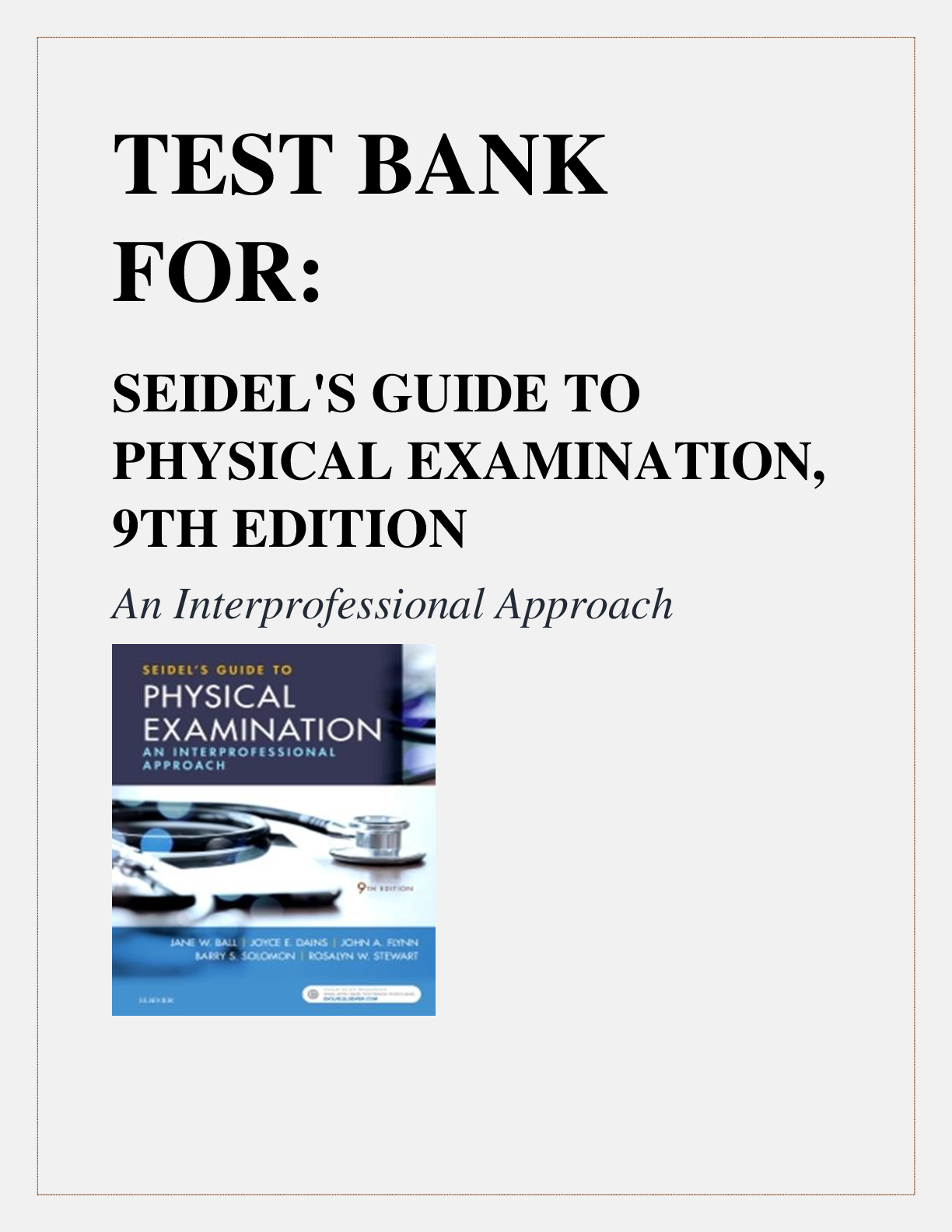Seidel’s Guide to Physical Examination, 9th Edition
Document Content and Description Below
Chapter 01: The History and Interviewing Process Ball: Seidel’s Guide to Physical Examination, 9th Edition MULTIPLE CHOICE 1. Which question would be considered a “leading question?” ... a. “What do you think is causing your headaches?” b. “You don’t get headaches often, do you?” c. “On a scale of 1 to 10, how would you rate the severity of your headaches?” d. “At what time of the day are your headaches the most severe?” 2. When are open-ended questions generally most useful? a. During sensitive area part of the interview b. After several closed-ended questions have been asked c. While designing the genogram d. During the review of systNemsR I 3. Periods of silence during the interview can serve important purposes, such as: a. allowing the clinician to catch up on documentation. b. promoting calm. c. providing time for reflection. d. increasing the length of the visit. 4. Mr. Franklin is speaking with you, the healthcare provider, about his respiratory problem. Mr. Franklin says, “I’ve had this cough for 3 days, and it’s getting worse.” You reply, “Tell me more about your cough.” Mr. Franklin states, “I wish I could tell you more. That’s why I’m here. You tell me what’s wrong!” Which caregiver response would be most appropriate for enhancing communication? a. “After 3 days, you’re tired of coughing. Have you had a fever?” b. “I’d like to hear more about your experiences. Where were you born?” c. “I don’t know what’s wrong. You could have almost any disease.” d. “I’ll examine you and figure out later what the problem is.” 5. After you ask a patient about her family history, she says, “Tell me about your family now.” Which response is generally most appropriate? a. Ignore the patient’s comment and continue with the interview. b. Give a brief, undetailed answer. c. Ask the patient why she needs to know. d. Tell the patient that you do not discuss your family with patients. 6. A 36-year-old woman complains that she has had crushing chest pain for the past 2 days. She seems nervous as she speaks to you. An appropriate response is to: a. continue to collect information regarding the chief complaint in an unhurried manner. b. finish the interview as rapidly as possible. c. ask the patient to take a deep breath and calm down. d. ask the patient if she wants to wait until another day to talk to you. 7. Ms. A states, “My life is just too painful. It isn’t worth it.” She appears depressed. Which one of the following statements is the most appropriate caregiver response? a. “Try to think about the good things in life.” b. “What in life is causing you such pain?” c. “You can’t mean what you’re saying.” d. “If you think about it, nothing is worth getting this upset about.” 8. You are collecting a history from a 16-year-old girl. Her mother is sitting next to her in the examination room. When collecting history from older children or adolescents, they should be: a. given the opportunity to be interviewed without the parent at some point during the interview. b. mailed a questionnaire in advance to avoid the need for them to talk. c. ignored while you address all questions to the parent. d. allowed to direct the flow of the interview. 9. Information that is needed during the initial interview of a pregnant woman includes all the following except: a. the gender that the woman hopes the baby will be. b. past medical history. c. healthcare practices. d. the woman’s remembering (knowledge) about pregnancy. 10. When interviewing older adults, the examiner should: a. speak extremely loudly, because most older adults have significant hearing impairment. b. provide a written questionnaire in place of an interview. c. position himself or herself facing the patient. d. dim the lights to decrease anxiety. 11. To what extent should the paNtienRt wiIth aGphyBs.icaCl diMsability or emotional disorder be involved in providing health history information to the health professional? a. The patient should be present during information collection but should not be addressed directly. b. All information should be collected from past records and family members while the patient is in another room. c. The patient should be involved only when you sense that he or she may feel ignored. d. The patient should be fully involved to the limit of his or her ability. 12. When taking a history, the nurse should: a. ask the patient to give you any information he or she can recall about his or her health. b. start the interview with the patient’s family history. c. use a chronologic and sequential framework. d. use a holistic and eclectic structure. ...............................................................................continued.......................................................................... [Show More]
Last updated: 11 months ago
Preview 1 out of 198 pages

Reviews( 0 )
Document information
Connected school, study & course
About the document
Uploaded On
Mar 16, 2023
Number of pages
198
Written in
Additional information
This document has been written for:
Uploaded
Mar 16, 2023
Downloads
0
Views
74

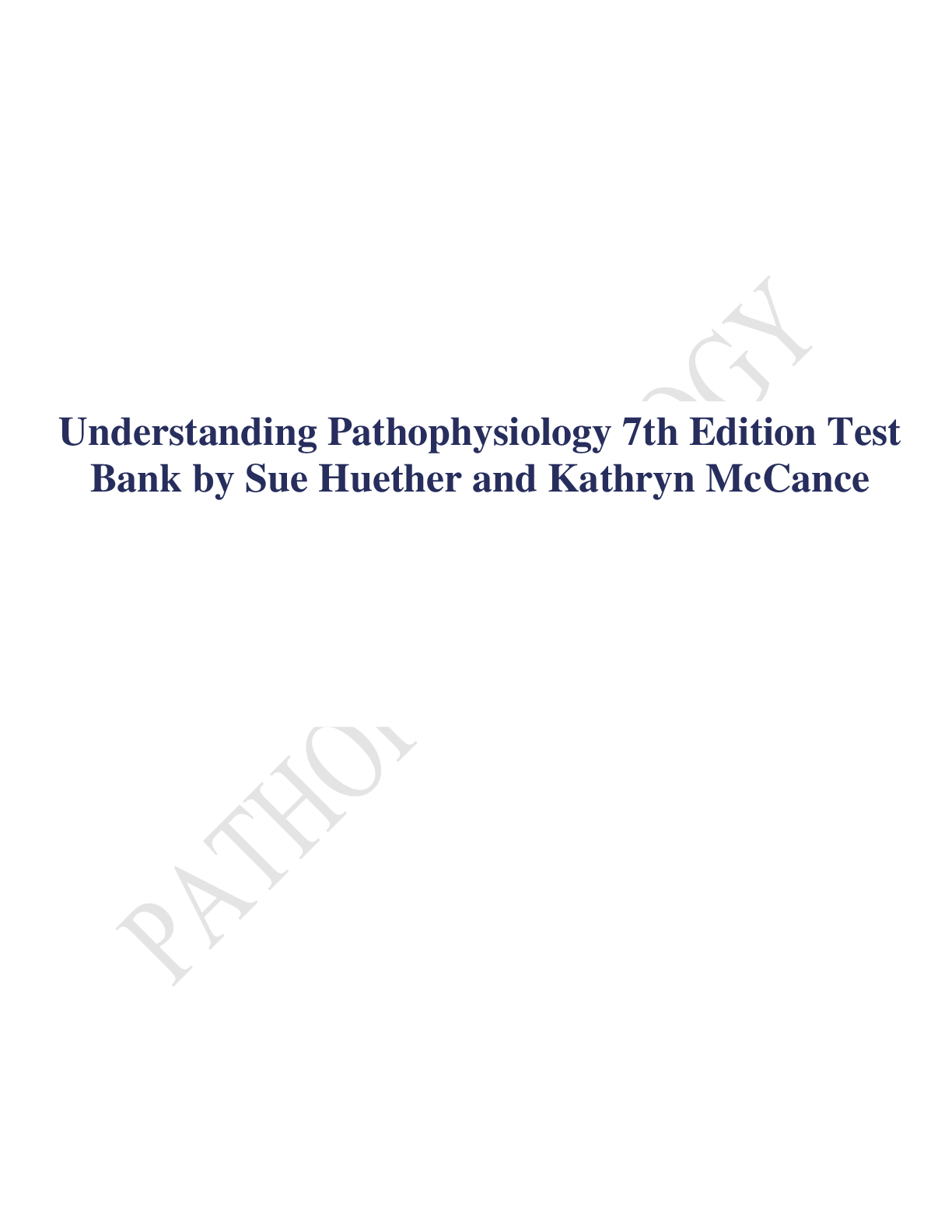
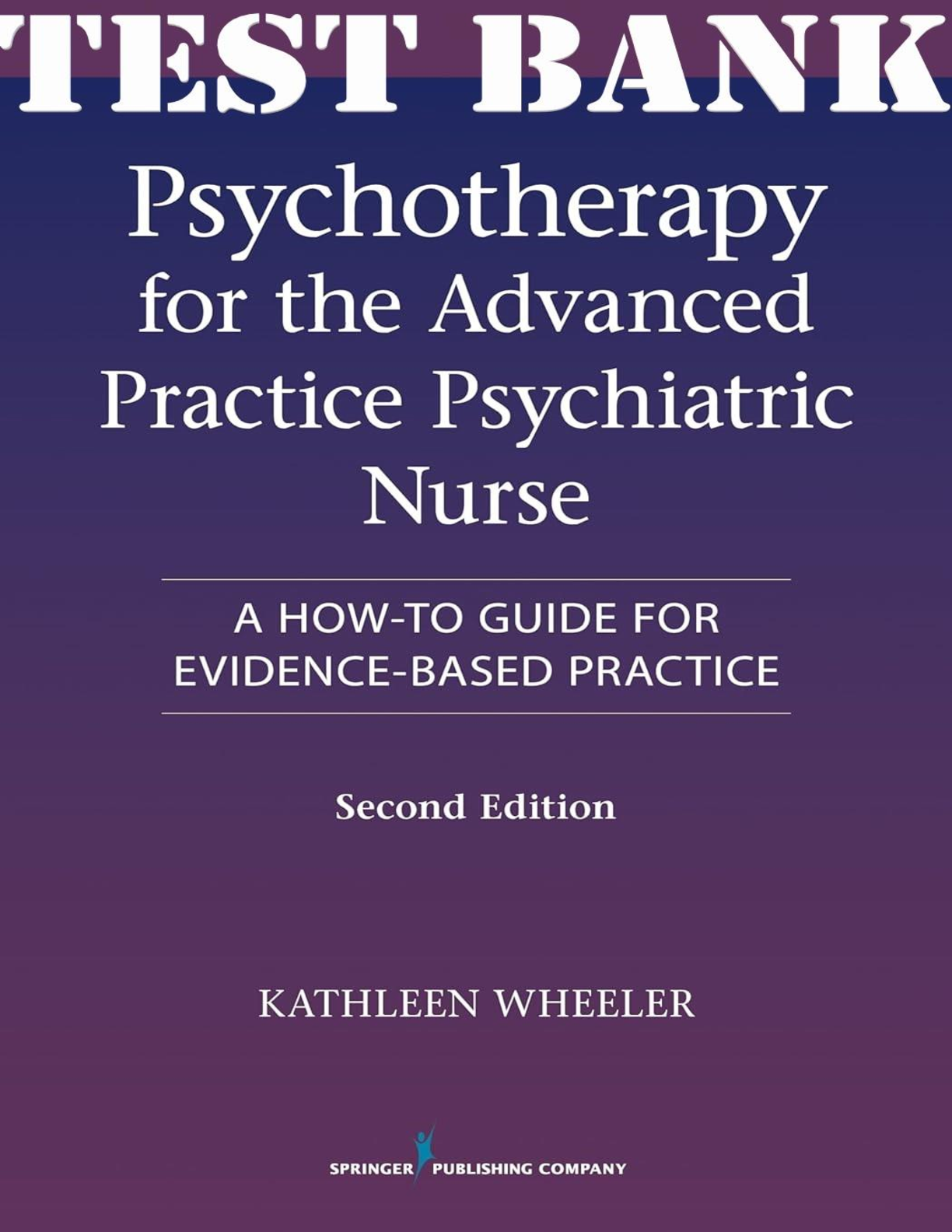
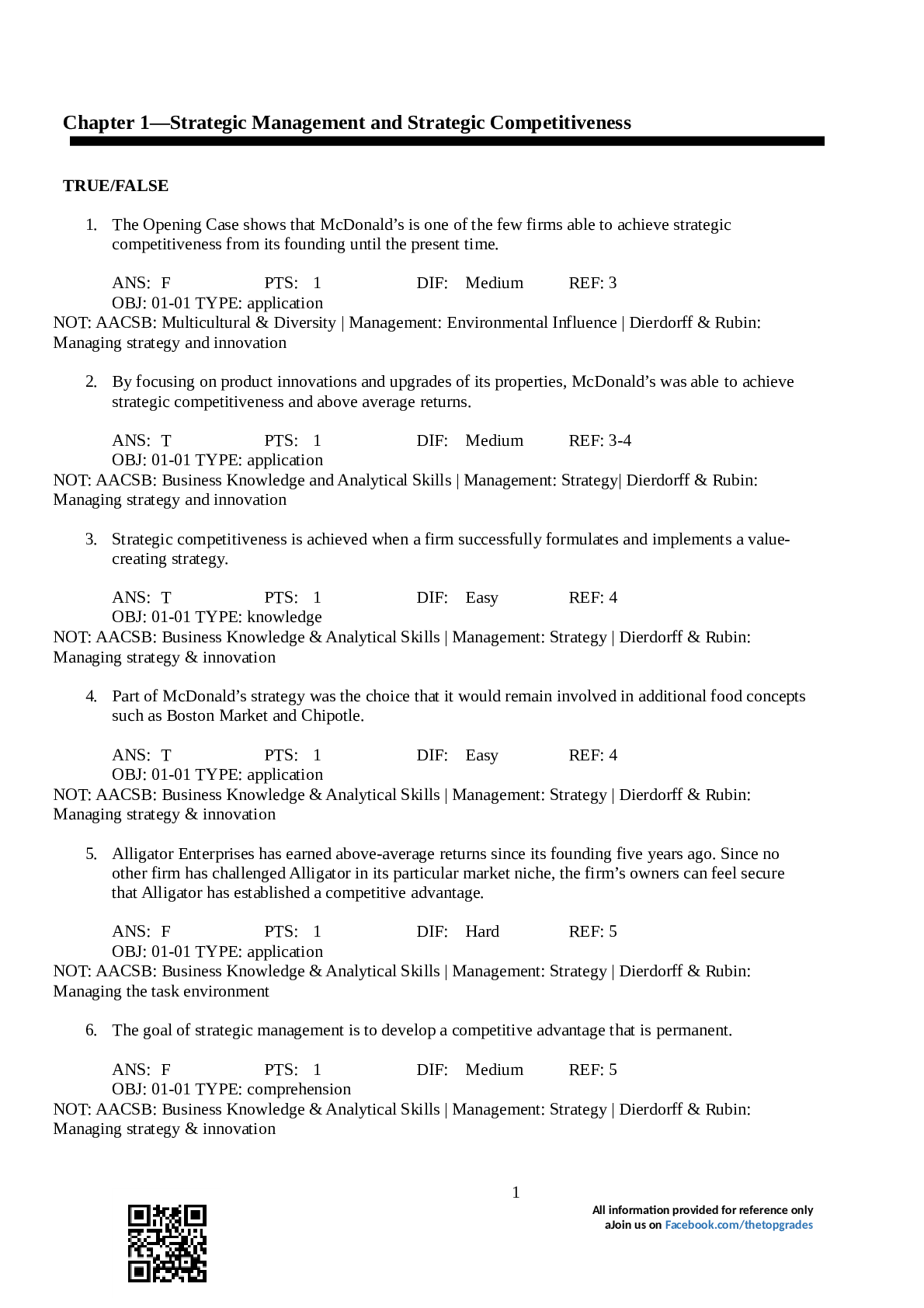

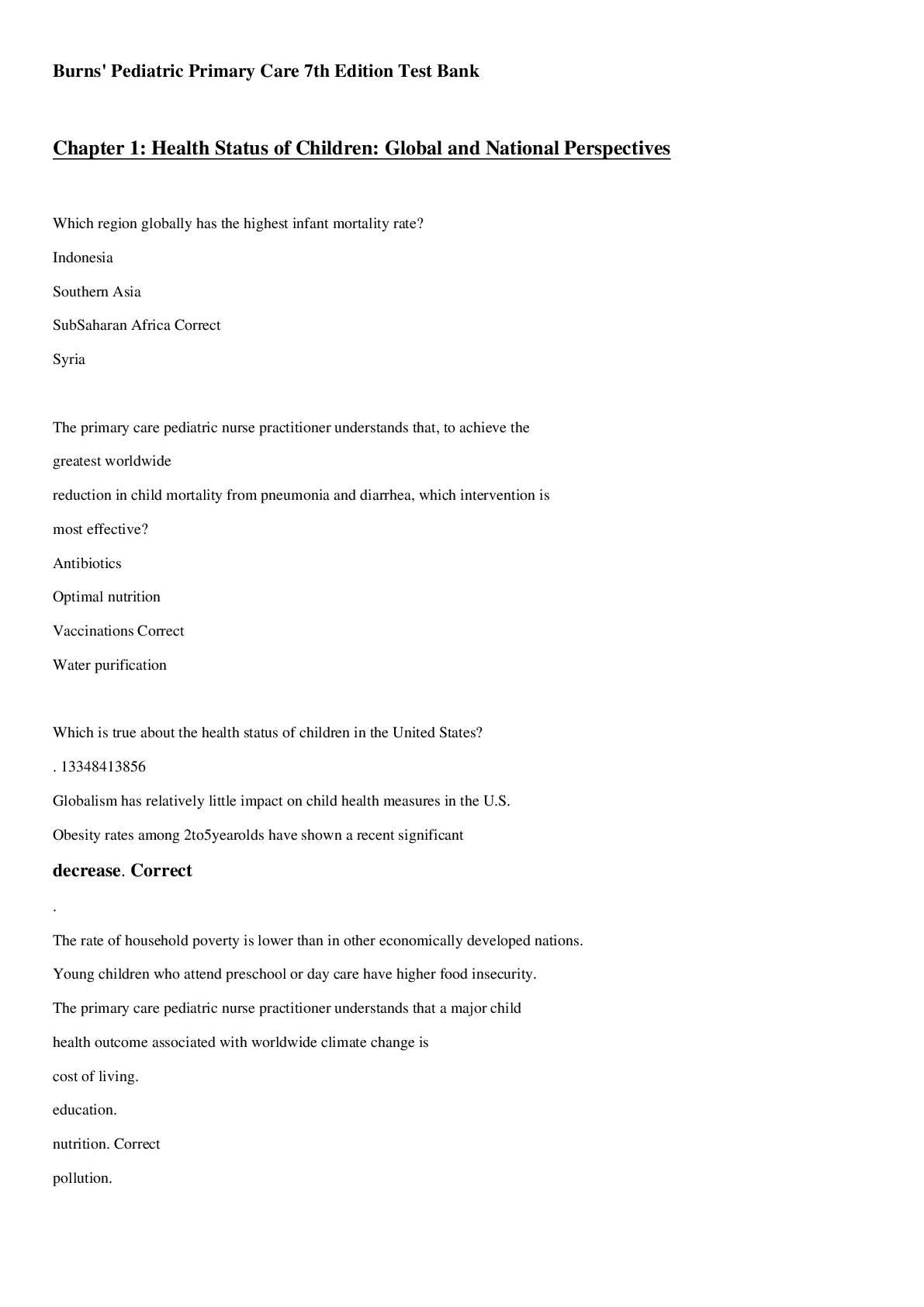


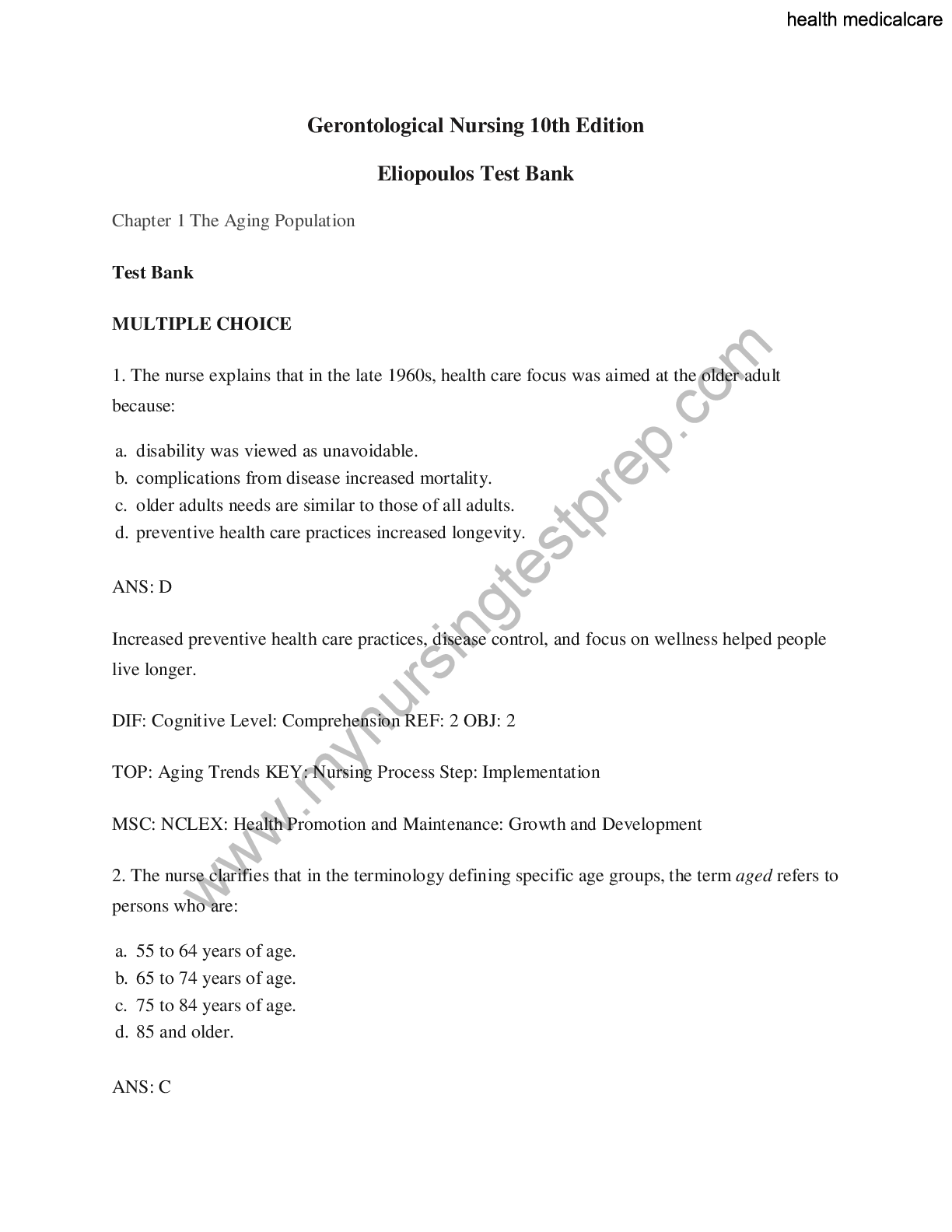
 (1).png)
